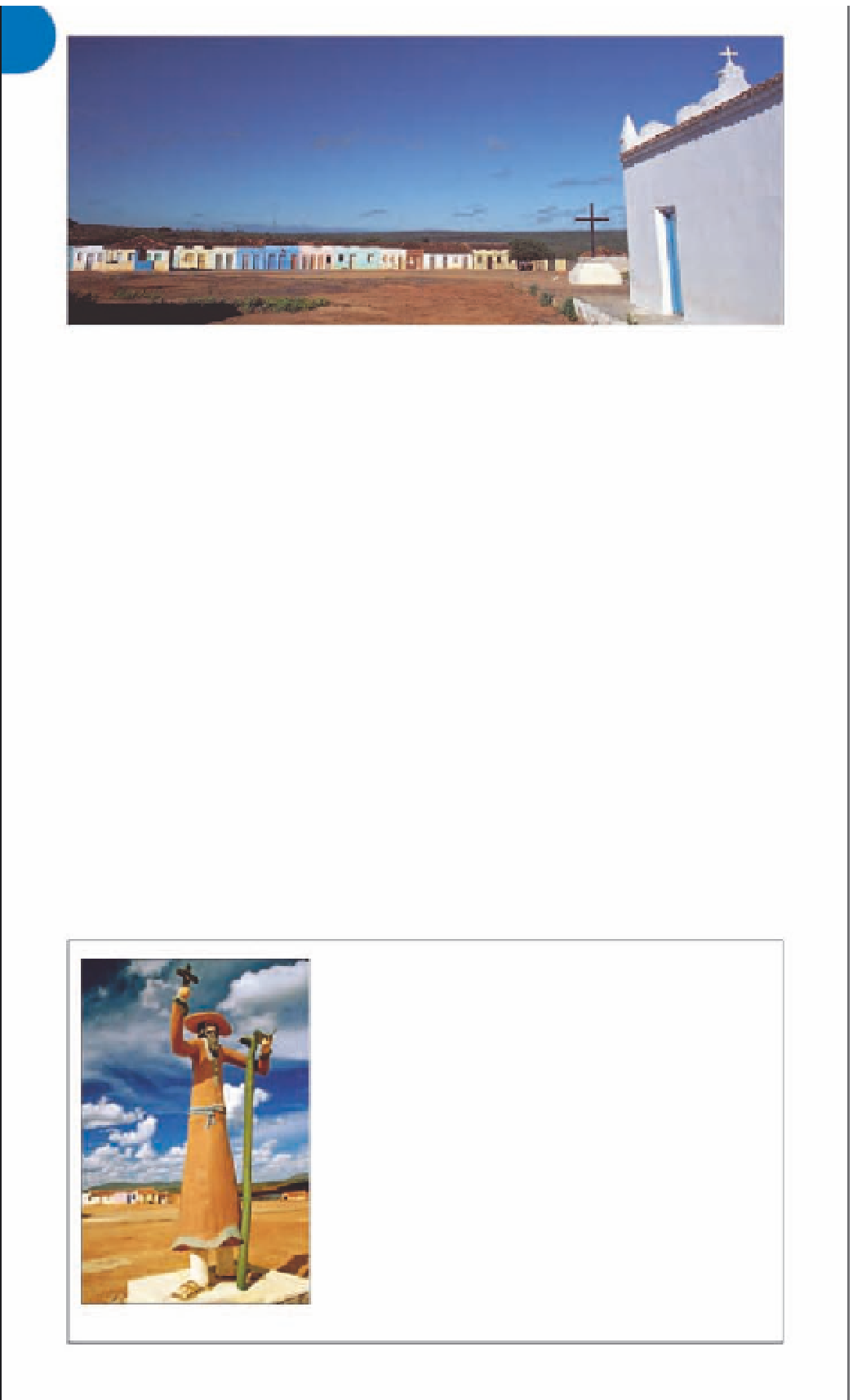Travel Reference
In-Depth Information
Church and colorful houses in the small town of Canudos
Canudos
t
*
19th-century Canudos War
into a state park,
Parque
Estadual de Canudos
. To
access the park, visitors
should get permission from
the Memorial de Canudos.
The original settlement
of Canudos now lies at
the bottom of the Lagoa
Cocorobó, which flooded
the area in 1970. However,
many of the original battle-
fields escaped the deluge
and have been made into
an open-air museum which
is part of the park, just on
the outskirts of the town.
The principal museum sites
include Morro do Conselheiro
(Counsellor Hill), Vale da
Morte (Valley of Death), the
Estrada Sagrada (Holy Road),
and the Vale da Degola
(Valley of Beheadings).
The dry
sertão
landscape
is quite striking - vegetation
consists of
caatinga
bushes,
cacti, bromeliads,
umbu
trees and
favelas
, a small
thorn-covered shrub. After
the April rains, the landscape
briefly turns lush and animals
such as deer, hyacinth
macaws, and armadillos
can be spotted frequently.
In the Canudos region
during the war, Republican
soldiers were camped in the
hills that were covered by
favela
trees, a very common
shrub in the dry interior of
Bahia. Upon their return to
Rio, the soldiers never
received the land which they
had been promised. They
ended up squatting on the
hills, naming their new-found
community
favela
after the
trees in the
sertão
. Hence, the
name
favela
(see p85)
that is
now used to refer to the urban
ghettos traces its origins to the
Canudos War.
Y
55,000.
@
Traveling through the sleepy
town of Canudos, it is hard to
imagine that this was once
the staging ground for a year-
long rebellion in 1897. Led by
Antônio Conselheiro, the war
wound up costing the lives of
more than 20,000 people and
almost destroyed the future of
the Brazilian Republic.
An eyewitness account at
the end of the Canudos War
was written by journalist
Euclides da Cunha, who
was on the scene to cover
the events for a São Paulo
newspaper. He went on
to write a book based on
his coverage of the war.
Published in 1902,
Os Sertões
(
Rebellion in the Backlands
)
is one of the most important
works of Brazilian literature.
In 1997, the University of
Bahia turned the site of the
Parque Estadual
de Canudos
Tel
(075) 3494 2241.
tours
arranged by Memorial de Canudos.
&
8
ANTÔNIO CONSELHEIRO
Part Robin Hood, part religious fanatic, Antônio Conselheiro,
the leader of Brazil's 1897 Canudos War, was born Antônio
Vicente Mendes Maciel in 1830 in Ceará. Conselheiro
traveled the dry
sertão
for decades, first as a salesman and
legal
conselheiro
(counselor), then as a preacher and
reformer, raging against the plight of the peasants. In 1893,
Conselheiro, outraged at the newly imposed taxes on an
already starving population, settled in the tiny upland town
of Canudos and began creating what was, in effect, an
independent state. Conselheiro began implementing an early
form of socialism, heavily tinged with religious values. The
poor of the region flocked to Conselheiro and Canudos
quickly grew to a community of more than 8,000 people.
With the prestige of the new Republican government at
stake, the army sent three large forces against Canudos. All
were destroyed. Finally, in November of 1897, the army
mounted a full-scale invasion. Conselheiro died during the
battle and all the residents of Canudos were slaughtered.
Statue of Antônio Conselheiro
For hotels and restaurants in this region see pp376-8 and pp401-403





































